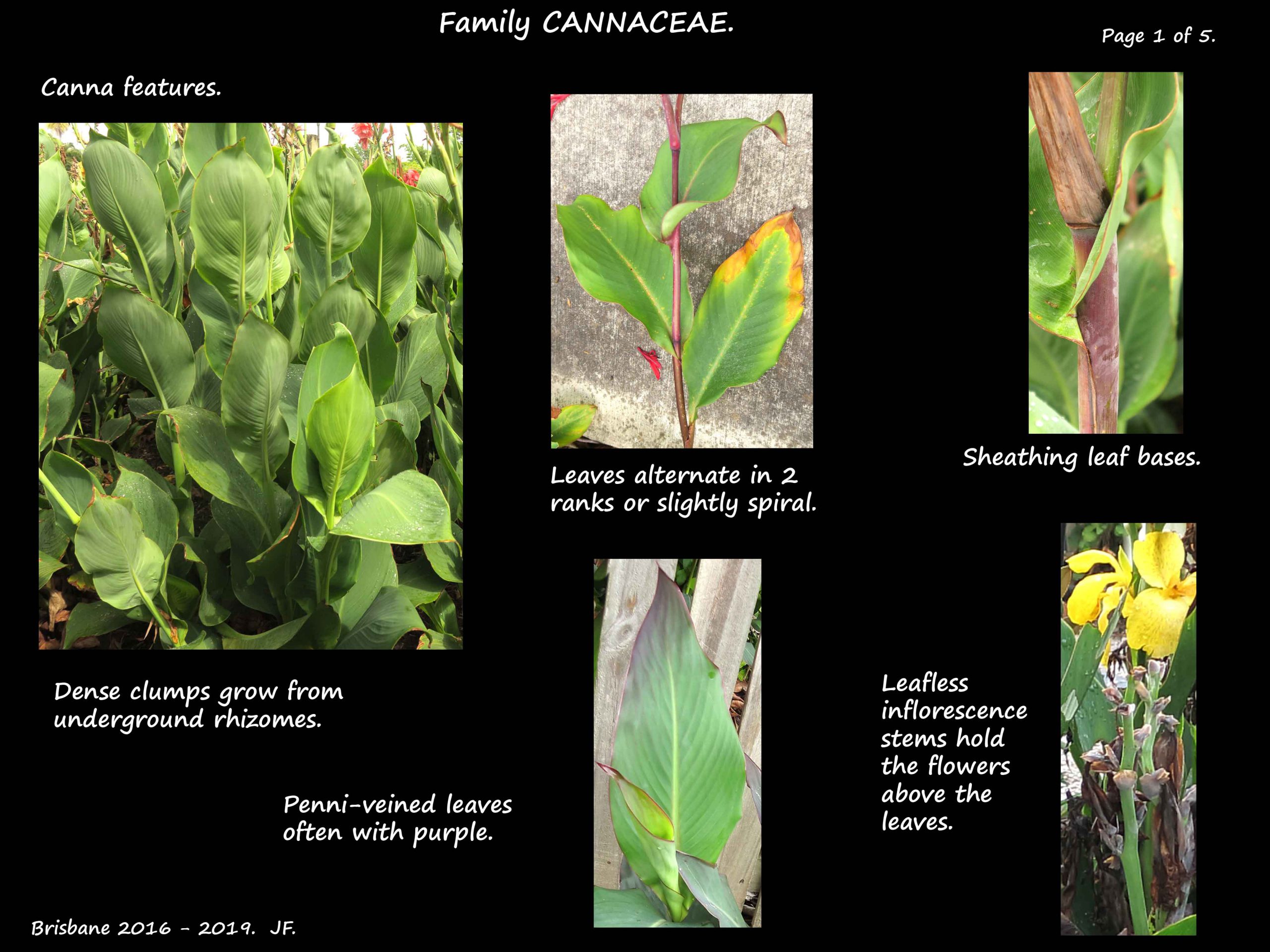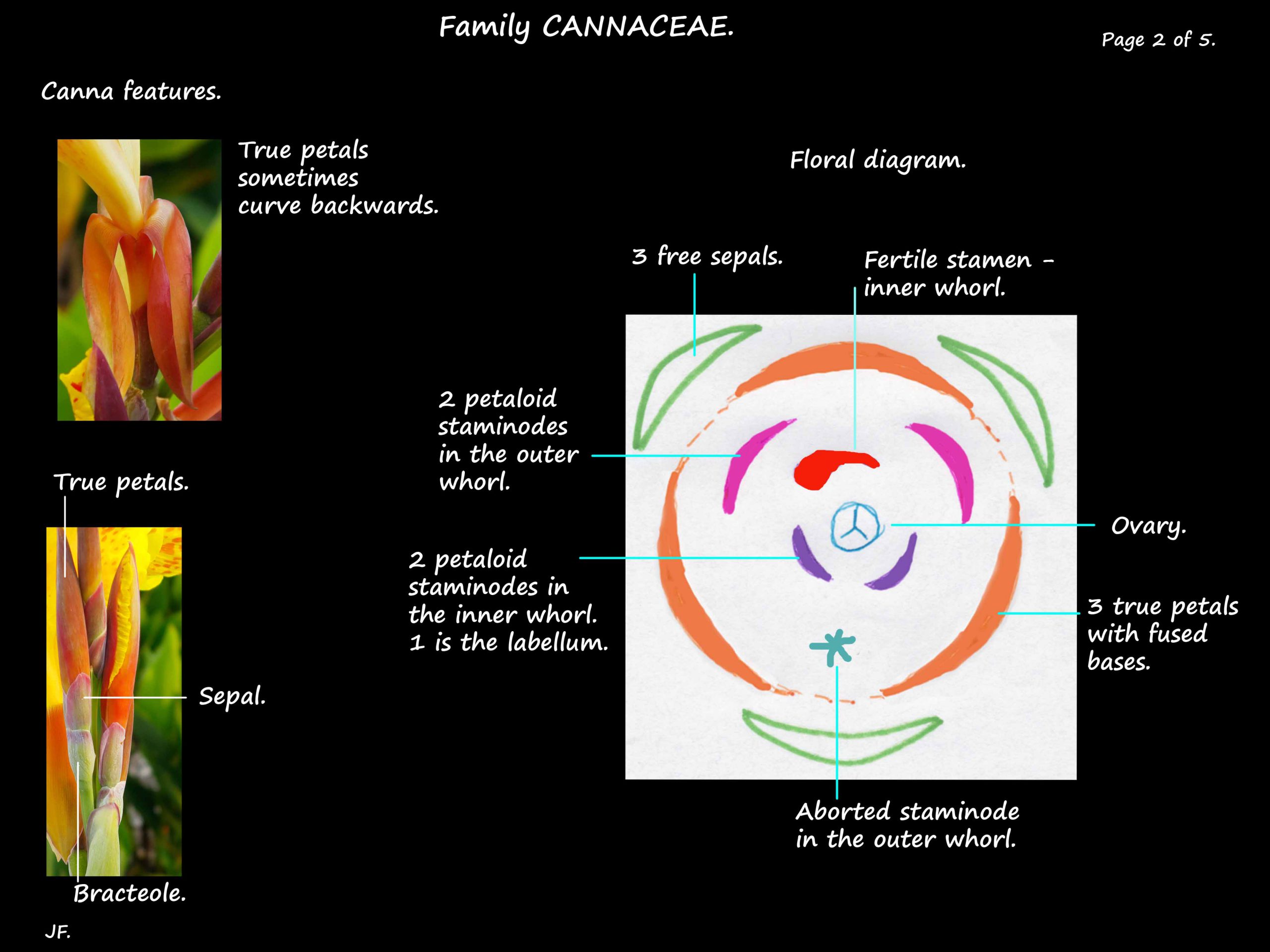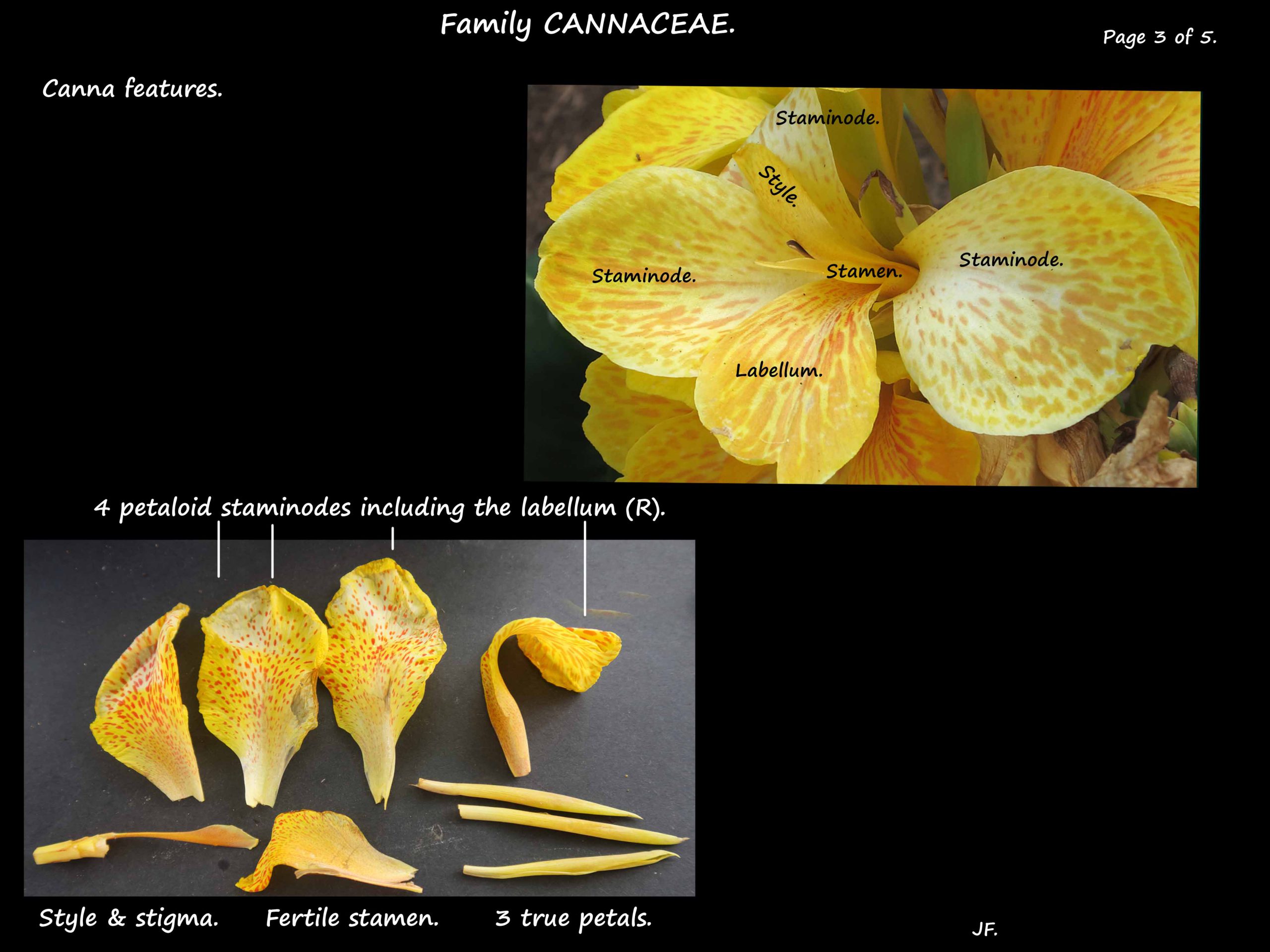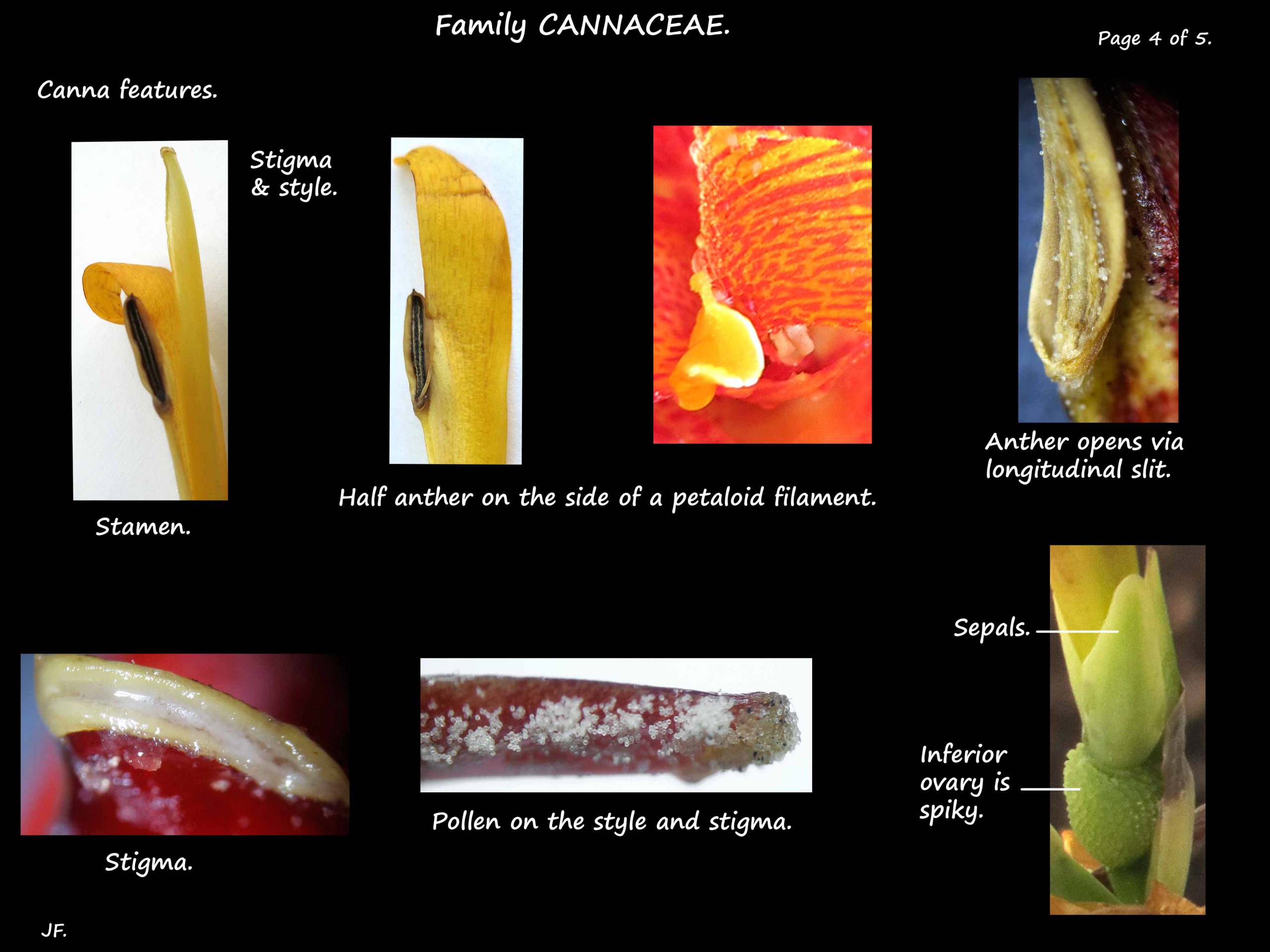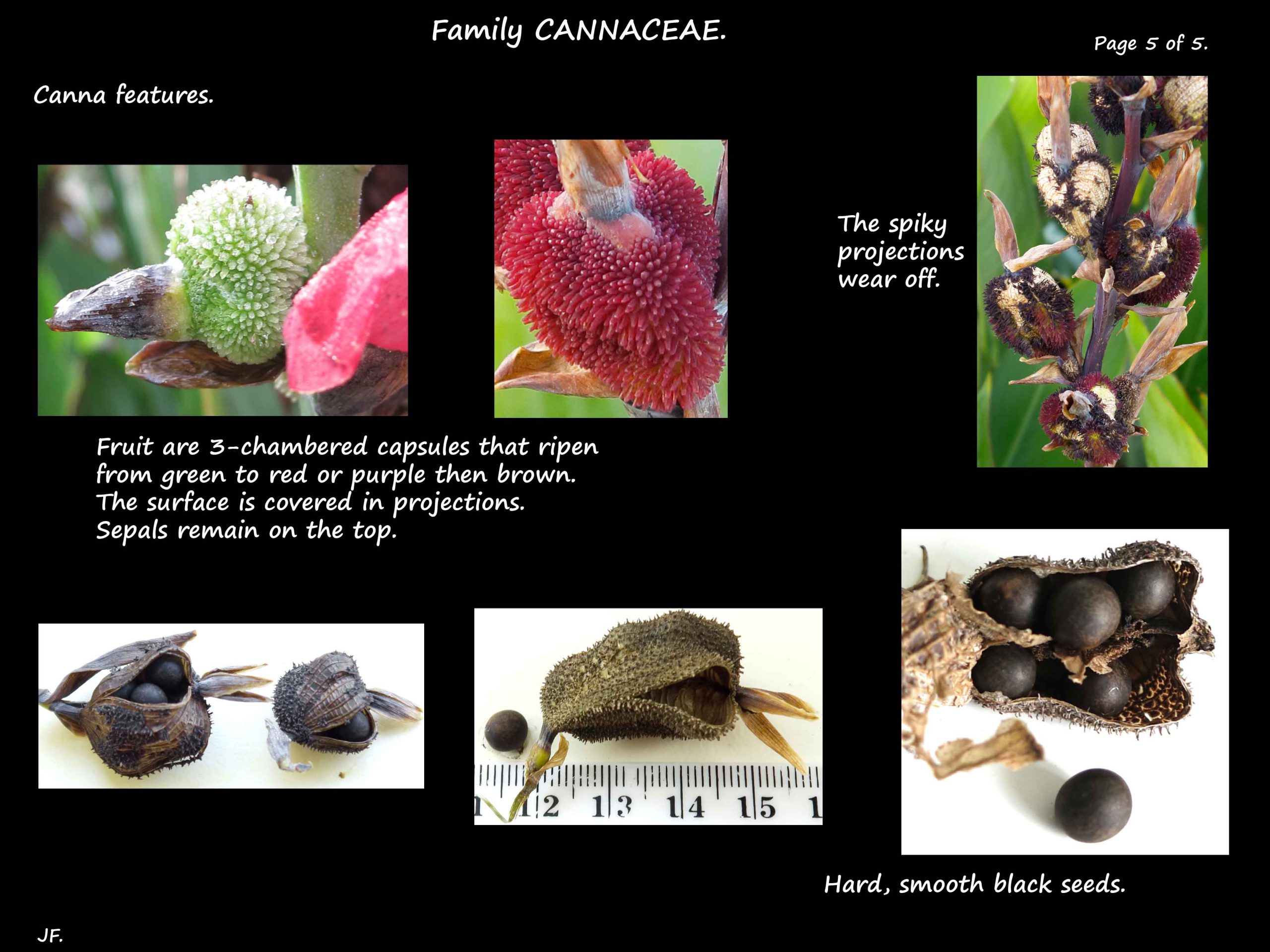Cannaceae.
In the Order Zingiberales Canna is the only genus in the family.
There are around 10 to 26 species.
They have thick, branching, starchy underground rhizomes.
New plants grow from the rhizomes producing dense clumps.
The unbranched, upright stems are up to 3 m high.
Medium to large leaves are alternately arranged in 2 ranks or slightly spiral.
The narrowed bases sheath the stem.
The wide, flat, green or purplish blades have smooth margins and a pointed tip.
They have a midrib from which multiple parallel veins run to the margins (penni-veined).
Terminal inflorescences are branched or unbranched.
They have bracts and the flowers, on stalks, have bracteoles.
Flower parts are in 3’s with the perianth described as 6 tepals or 3 petals and 3 sepals.
The 3 free sepals or outer tepals are green, purplish or slightly petaloid.
They are usually small and triangular and they persist on the fruit.
The 3 longer and narrow petals have their bases fused forming a tube up to 6 cm long.
In each whorl one member is usually shorter than the other two.
The perianth is usually hidden by the larger false ‘petals’.
What initially look like petals are actually highly modified stamens and staminodes.
The stamen or staminode filaments are enlarged and coloured to resemble petals.
Their colours are mostly red to yellow.
A typical androecium has 1 fertile stamen and up to 5 infertile staminodes in 2 whorls of 3.
They are attached to the tube formed by the fused bases of the inner tepals (petals).
Outer whorl.
This has 2 petaloid staminodes and 1 missing or aborted one.
Inner whorl.
This has 1 fertile stamen and 2 petaloid staminodes.
a.) The fertile stamen.
This is petal-like, 3 to 4 mm wide and derived from the enlarged stamen filament.
It has a half-anther derived from one of the 2 anther sacs of a normal stamen.
The half-anther, about 10 mm long, is on one edge and often well down from the tip.
It opens inwards via a longitudinal slit.
b.) The labellum.
Derived from one of the inner staminodes.
It is up to 5 cm long and only 8 mm wide with the tip curved backwards.
It is often the most colourful part of the flower.
c.) A petaloid staminode completes the inner whorl.
In the centre is the inferior ovary of 3 fused carpels.
It has spiky projections on the surface.
Each of the 3 locules has numerous ovules with axile placentation.
The single style, topped with the stigma, is flattened and looks like a narrow petal.
It commonly has a sprinkle of pollen just under the tip.
Pollinators landing on the labellum touch the stigma depositing pollen from another plant.
Advancing down the labellum they collect pollen fallen on the style from the anther.
Some flowers are self-pollinating.
Nectar is secreted by glands on the ovary.
The fruit are ellipsoidal capsules usually covered in small projections which may disappear.
They are up to 3 cm long by 2 cm wide, green then red or purple then brown.
The perianth parts remain at the top.
The numerous smooth black seeds, up to 8 by 7 mm, have a very hard coating.
J.F.
